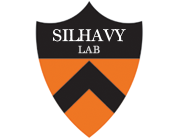PrlA suppressor mutations cluster in regions corresponding to three distinct topological domains
Type
The SecY protein of Escherichia coli and its homologues in other organisms, are integral components of the cellular protein translocation machinery. Suppressor mutations that alter SecY (the prlA alleles) broaden the specificity of this machinery and allow secretion of precursor proteins with defective signal sequences. Twenty-five prlA alleles have been characterized. These suppressor mutations were found to cluster in regions corresponding to three distinct topological domains of SecY. Based on the nature and position of the prlA mutations, we propose that transmembrane domain 7 of SecY functions in signal sequence recognition. Results suggest that this interaction may involve a right-handed supercoil of alpha-helices. Suppressor mutations that alter this domain appear to prevent signal sequence recognition, and this novel mechanism of suppression suggests a proofreading function for SecY. We propose that suppressor mutations that alter a second domain of SecY, transmembrane helix 10, also affect this proof-reading function, but indirectly. Based on the synthetic phenotypes exhibited by double mutants, we propose that these mutations strengthen the interaction with another component of the translocation machinery, SecE. Suppressor mutations were also found to cluster in a region corresponding to an amino-terminal periplasmic domain. Possible explanations for this unexpected finding are discussed.

